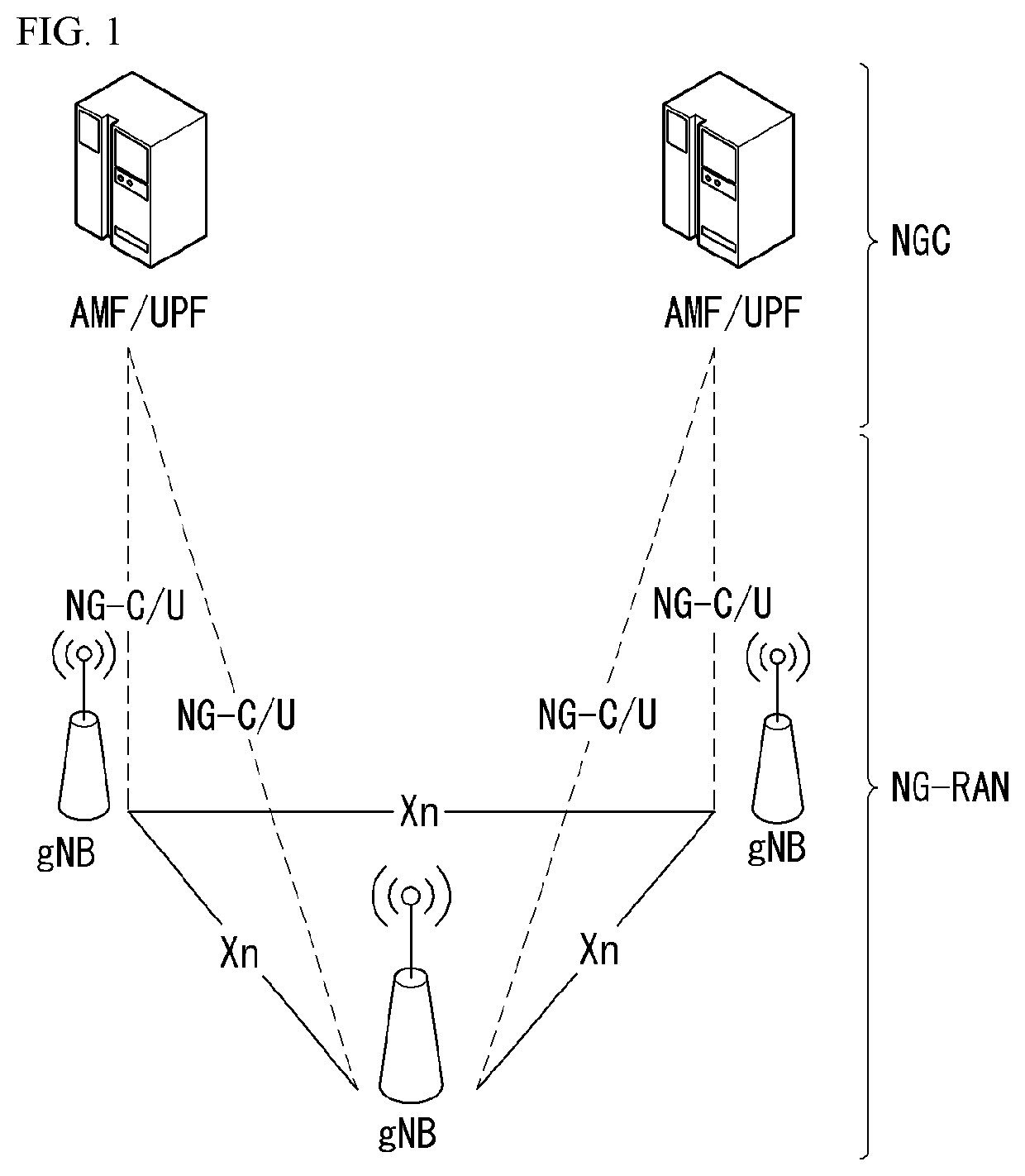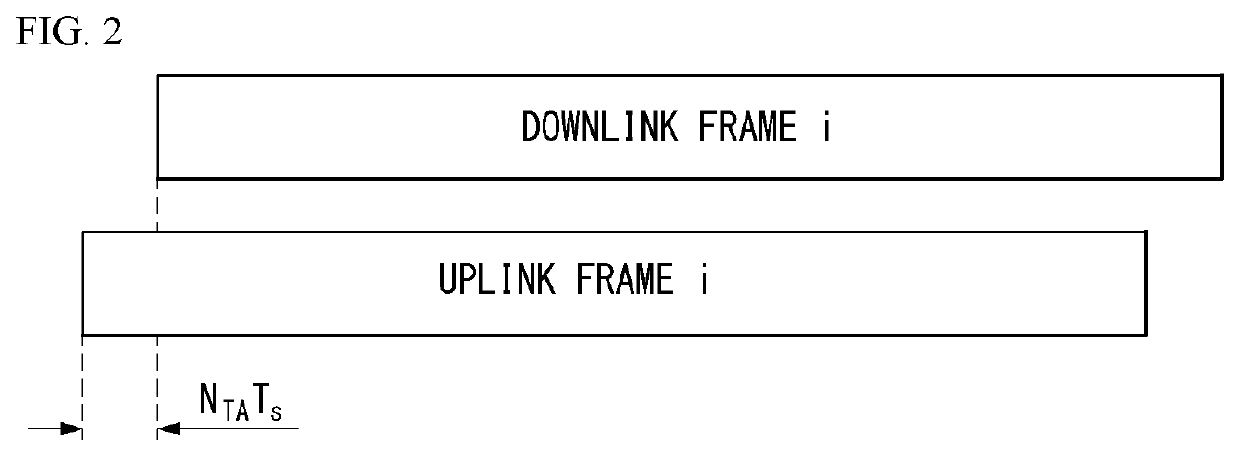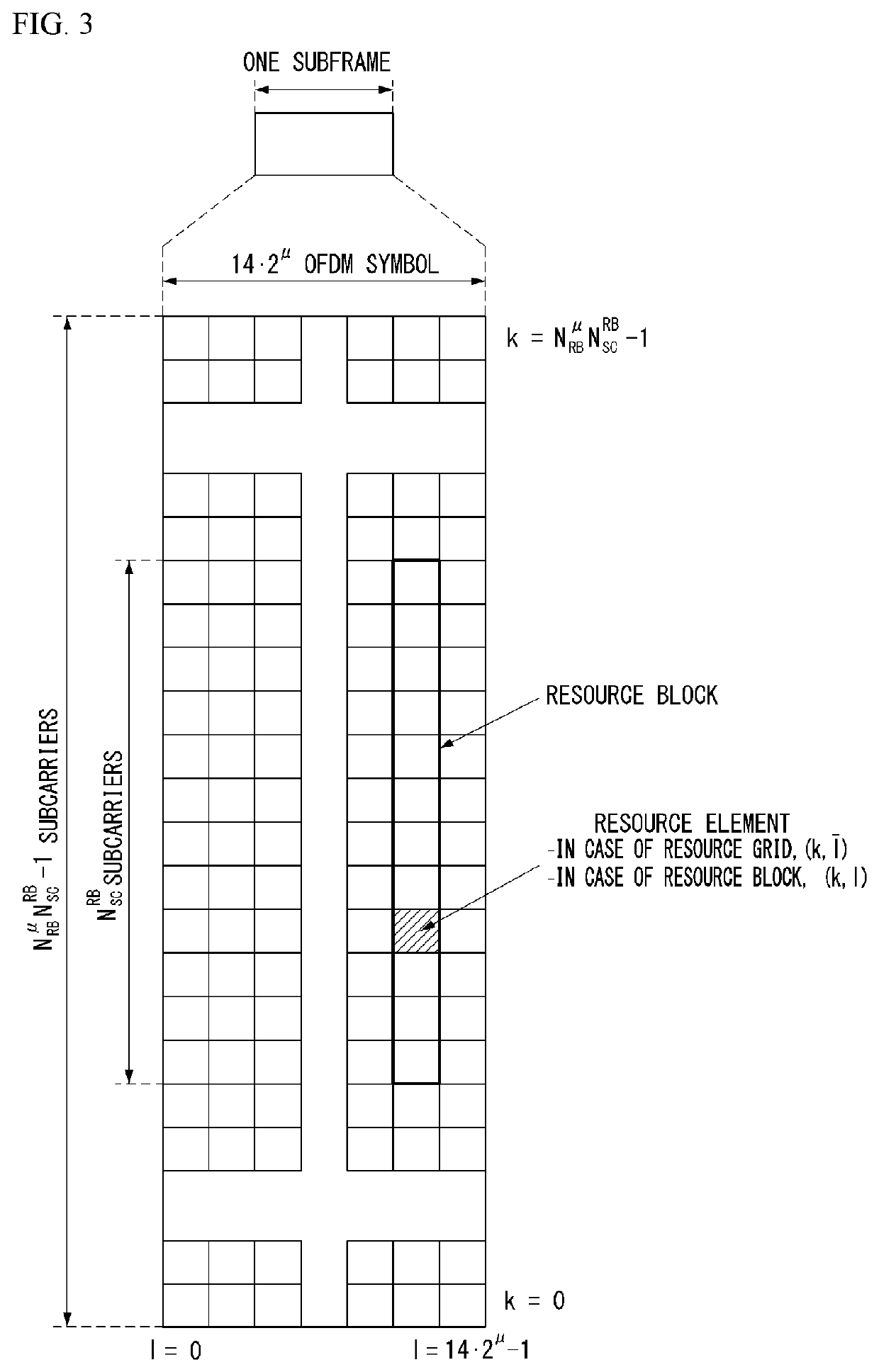Method for transmitting and receiving reference signal in wireless communication system and apparatus for the same
- Summary
- Abstract
- Description
- Claims
- Application Information
AI Technical Summary
Benefits of technology
Problems solved by technology
Method used
Image
Examples
first embodiment
[0135]Hereinafter, in the first embodiment, a method in which ports for a transmission of DMRS are multiplexed using the FDM method first is described in detail.
[0136]In the case that ports of DMRS are defined using the FDM method first, as the number of ports increases, the ports may be multiplexed using the FDM method first, and in the case that all of resources for the FDM method are used, the ports may be multiplexed using the CDM method on time axis or frequency axis.
[0137]For example, each of antenna ports 1 and 2 for transmitting a DMRS in type 1 shown in FIG. 6(a) may be defined by using combs 1 and 2, respectively.
[0138]Port 3 may be distinguished from port 1 using T-CDM / F-CDM method in comb 1, and port 4 may be distinguished from port 1 using T-CDM / F-CDM method in comb 2.
[0139]In the case that FMR ports are multiplexed using the FDM method first, when there is one port indicated to a UE, a transmission power of DMRS may be 3 dB power boosted in comparison with a transmissi...
second embodiment
[0153]Hereinafter, in the second embodiment, a method in which ports for a transmission of DMRS are multiplexed using the F-CDM method first is described in detail.
[0154]In the case that ports of DMRS are defined using the F-CDM method first, as the number of ports increases, ports may be multiplexed using the F-CDM method first, and in the case that all of resources for the F-CDM method are used, the ports may be multiplexed using the FDM method.
[0155]For example, each of antenna ports 1 and 2 for transmitting a DMRS in type 1 shown in FIG. 6(a) may be multiplexed by using orthogonal cover code (OCC) (e.g., OCC [1 1] and [1 −1]) on frequency axis in comb 1, and each of ports 3 and 4 may be multiplexed by using OCC on frequency axis in comb 2.
[0156]In the case that DMRS port is defined using the F-CDM method first, when the number of ports indicated to a UE is two or less, a transmission power of DMRS may be 3 dB power boosted in comparison with a transmission power of data using th...
third embodiment
[0171]Hereinafter, in the third embodiment, a method in which ports for a transmission of DMRS are multiplexed using the F-CDM method and the T-CDM method first is described in detail.
[0172]In the case that ports of DMRS are defined using the F-CDM method and the T-CDM method first, as the number of ports increases, ports may be multiplexed using the F-CDM method and the T-CDM method first, and in the case that all of resources for the F-CDM method and the T-CDM method are used, the ports may be multiplexed using the FDM method on time axis or frequency axis.
[0173]For example, each of antenna ports 1, 2, 3 and 4 for transmitting a DMRS in type 1 shown in FIG. 6(a) may be multiplexed by using OCC [1 1], [1, −1] on frequency axis in comb 1, and OCC [1 1], [1, −1] on time axis in comb 2, and each of ports 5, 6, 7 and 8 may be multiplexed by using OCC on frequency axis and OCC on time axis in comb 2.
[0174]In the case that DMRS port is defined using the F-CDM method and the T-CDM method ...
PUM
 Login to View More
Login to View More Abstract
Description
Claims
Application Information
 Login to View More
Login to View More - R&D
- Intellectual Property
- Life Sciences
- Materials
- Tech Scout
- Unparalleled Data Quality
- Higher Quality Content
- 60% Fewer Hallucinations
Browse by: Latest US Patents, China's latest patents, Technical Efficacy Thesaurus, Application Domain, Technology Topic, Popular Technical Reports.
© 2025 PatSnap. All rights reserved.Legal|Privacy policy|Modern Slavery Act Transparency Statement|Sitemap|About US| Contact US: help@patsnap.com



